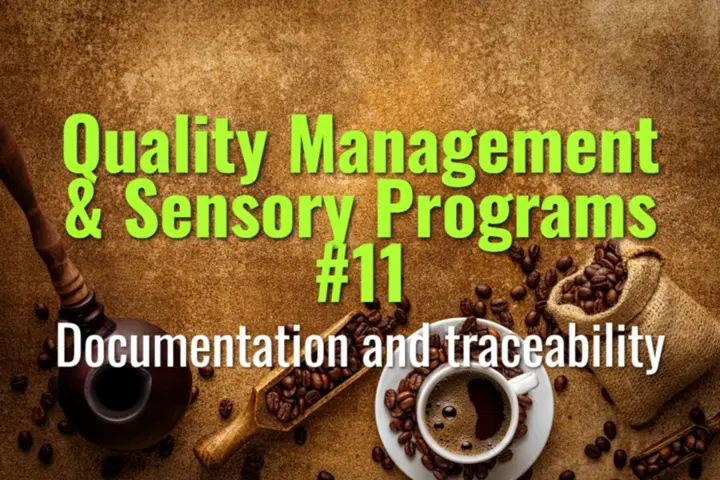Documentation and traceability
How to build robust documentation and traceability systems in coffee operations to ensure quality, compliance, and transparency.
- Coffee Basics Nerds
- 2 min read
Article 11 of 12 in Quality Management & Sensory Programs/

Why Documentation & Traceability Matter
- Coffee passes through many hands: producer, exporter, roaster, barista.
- Without traceability, quality issues and certifications cannot be verified.
- Documentation ensures consistency, accountability, and trust with customers and partners.
Key Documentation Elements
- Green Coffee:
- Lot numbers, origin details, harvest year, certifications.
- Moisture, water activity, and defect records.
- Roasting:
- Roast date, batch number, roast curve, Agtron score.
- Operator name and QC cupping notes.
- Brewing:
- Brew recipes (dose, yield, time, temperature).
- Daily QC checks (TDS, EY, sensory notes).
- Customer-Facing:
- Labels with origin, process, and roast date.
- Certification logos (Fairtrade, Organic, etc.).
Traceability Systems
- Lot Coding: Unique codes assigned at intake → tracked through roasting → referenced at café.
- Batch Records: Log every roast, grind, and brew against a lot code.
- Digital QC Platforms: Cloud-based tools for tracking samples, QC scores, and complaints.
- Retention Samples: Physical archives for verification (green, roasted, brewed).
Benefits
- Quality Assurance: Trace back any defect to farm, roast, or brew stage.
- Customer Trust: Transparency builds loyalty.
- Regulatory Compliance: Meets food safety, HACCP, and certification standards.
- Operational Learning: Identify systemic issues (e.g., recurring roast variance).
Best Practices
- Standardize documentation templates (intake logs, roast sheets, cupping forms).
- Train staff in accurate record-keeping.
- Audit traceability regularly—simulate a recall to test.
- Link traceability with supplier scorecards for full-chain accountability.
Example Workflow
- Green coffee intake → assign lot code.
- Roast batch → record curve, assign batch code.
- Café brews → log daily QC against batch code.
- Complaint arises → trace back to specific lot and roast batch.
Summary
Documentation and traceability are the backbone of coffee quality management. With clear records and lot coding, businesses can ensure accountability, compliance, and continuous improvement, while giving customers confidence in every cup.
You might also like:
- Tags:
- Green Coffee
- Best Practices
- Coffee Quality
- Food Safety
- Train Staff
- Dose Yield
- Water Activity
- Continuous Improvement
- Tds Ey
- Roast Curve
- Customer Trust
- Quality Assurance
- Lot Coding
- Roast Date
- Matter Coffee
- Ensures Consistency
- Record Keeping
- Example Workflow
- Sensory Notes
- Moisture Water
- Cupping Notes
- Fairtrade Organic
- Brew Recipes
- Roast Brew
- Origin Process